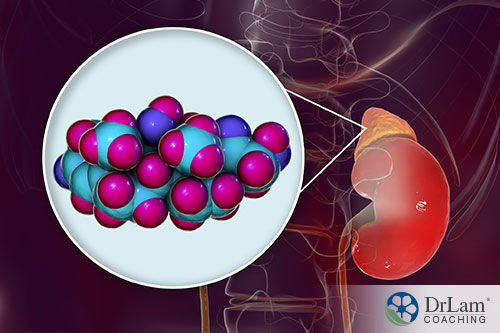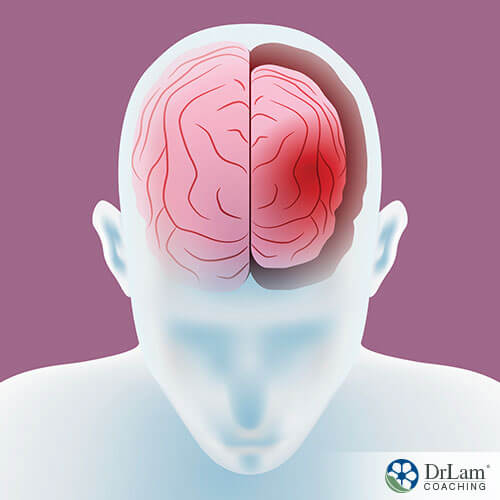 The conventional definition of Alzheimer’s disease describes it as an irreversible, progressive condition. It destroys memory and the ability to think over time until even simple tasks are impossible. Considering the fact that Alzheimer’s disease is the third leading cause of death in the U.S., any credible effort to prevent or alleviate it deserves attention. This article focuses on one such effort, the Bredesen Protocol.
The conventional definition of Alzheimer’s disease describes it as an irreversible, progressive condition. It destroys memory and the ability to think over time until even simple tasks are impossible. Considering the fact that Alzheimer’s disease is the third leading cause of death in the U.S., any credible effort to prevent or alleviate it deserves attention. This article focuses on one such effort, the Bredesen Protocol.
Second only to cancer and heart disease, Alzheimer’s disease affects as many as 45 million people in the U.S. People with any APOE genotype have a 15% risk of developing Alzheimer’s in their lifetime.
Because of the very serious ramifications of this condition and the fairly high risk of developing some form of the condition, research into prevention is growing at an all-time high rate.
However, research into developing a medication to prevent or resolve Alzheimer’s has proven elusive. Therefore, more research into other ways to prevent or alleviate the condition has become the focus. The major pathway for this increased research looked at lifestyle changes to improve brain health, contain degeneration, repair damage to neurons, and prevent cognitive changes that lead to Alzheimer’s.
The first randomized controlled research investigated lifestyle changes to determine their effects on Alzheimer’s. The results showed changes in nutrition, increased physical exercise, training in cognition, and becoming more social led to overall increased cognitive ability. Above all, these results indicated the possibility of preventing or delaying Alzheimer’s.
Chronic stress is one of the most common lifestyle factors today. This kind of ongoing stress affects the brain negatively. Cortisol, produced by your adrenal glands in response to stress, causes cell damage in the hippocampus and other areas of the brain. This damage increases your risk of developing Alzheimer’s.
In addition, stress plays a major role in the development of other conditions that also increase your risk of developing this condition. These risk factors include inflammation, insulin resistance, hypertension, depression, anxiety, calcium dysregulation, sleeplessness, and physical inactivity.
The pervasiveness of this type of stress supports the need for approaches that specifically include stress management in their makeup. It is for this reason that the Bredesen Protocol specifically addresses the effects of stress on Alzheimer’s development and progression.
Aging remains the key risk factor for developing Alzheimer’s. Beginning at age 65, the number of people who develop Alzheimer’s doubles every five years. Potentially, one-third of people aged 85 and older develop Alzheimer’s.
These numbers show the importance of developing a way to reduce or eliminate this condition. The Bredesen Protocol appears to supply this demand.
Increased age leads to a decreased ability to deal with stress. This increases the potential of stress becoming chronic. Chronic stress tends to increase the cognitive degeneration seen in aging.
Age-related changes in the brain that increase the risk of developing Alzheimer’s include increased inflammation, increased free radicals, atrophy of some brain structures, and decreased intracellular energy production.
 With increased stress comes increased cortisol released by your adrenals. Cortisol is the main stress-fighting hormone. Ideally, cortisol released due to stress returns to low levels once the stress ceases. However, chronic stress demands the continued release of cortisol. Therefore, at some point, your adrenals become unable to meet the demand in spite of continuing stress. This marks the beginning of Adrenal Fatigue Syndrome (AFS).
With increased stress comes increased cortisol released by your adrenals. Cortisol is the main stress-fighting hormone. Ideally, cortisol released due to stress returns to low levels once the stress ceases. However, chronic stress demands the continued release of cortisol. Therefore, at some point, your adrenals become unable to meet the demand in spite of continuing stress. This marks the beginning of Adrenal Fatigue Syndrome (AFS).
High levels of cortisol wreak havoc on brain functions and structures. Increased and toxic cortisol levels destroy cells in the hippocampus. This leads to excessive calcium ions, damage to your mitochondria, increased oxidative stress, and increased inflammation.
Research seems to indicate the amount of exposure to cortisol over your lifetime, particularly during middle age and later, leads to increased risk of Alzheimer’s. This exposure encourages dysfunction in both cognition and emotion. The dysfunction includes disruption of attention that is mediated by the hippocampus, loss of short term memory, mild cognitive impairment, and Alzheimer’s.
A combination of factors contributes to the development of Alzheimer’s. These factors include environmental issues, lifestyle, and genetics. One genetic risk factor is particularly notable for increasing the likelihood of developing Alzheimer’s.
The apolipoprotein E (APOE) gene is one everyone has, but certain alleles increase the risk of this condition.
Essentially three typically recognized subtypes of this condition exist. In addition, some add another possible subtype.
Systemic inflammation marks this subtype. Laboratory results show high Hs-CRP (high-sensitivity C-reactive protein), high levels of cytokines like interleukin-1 and interleukin-6, and a low ratio of albumin to globulin. People with this type have low-grade chronic inflammation.
Many of the factors here can also be found in a dysfunctional Inflammation circuit of the NeuroEndoMetabolic (NEM) Stress Response. The NEM is a built-in system for handling stress. It consists of six inter-related circuits comprised of three organs or organ systems in each. These circuits play a major role in how you handle stress. However, each of the circuits can become overloaded when stress becomes too great or goes on for too long.
This subtype involves reduced synaptogenesis. Neuronal atrophy occurs due to increased insulin resistance and increased homocysteine. In addition, this is associated with decreased support from estradiol, nerve growth factor, brain-derived neurotrophic factor, and progesterone.
Some researchers add this as a new subtype. It originates from an imbalance of the use of glucose and/or insulin in your brain. An enzyme that breaks down insulin, Insulin-Degrading Enzyme (IDE), also breaks down beta-amyloid. If your body uses up IDE because of too high sugar intake, none remains to break down beta-amyloid.
Environmental in nature, this subtype consists of toxin-related factors and chronic inflammatory response syndrome (CIRS). It typically presents with deficits in executive functions rather than the amnesia usually seen in hippocampal involvement.
Several principles/goals define the Bredesen Protocol. Addressing all of the factors contributing to the development of Alzheimer’s is the primary goal. Contemporary medical practice focuses on only symptoms and works to alleviate them. Simply addressing symptoms or working only with one or a few organ systems misses the mark when seeking complete remediation of this condition. The same applies to conventional medical approaches to the symptoms presented by AFS.
The Bredesen Protocol seeks to find the root causes of Alzheimer’s and to alleviate or reverse them. Major factors addressed by the Bredesen Protocol include fixing:
Because of the complexity of Alzheimer’s and the tendency of FDA research to focus on only one factor involved in the condition, the likelihood of this protocol being approved and distributed widely remains small. Altogether, the Bredesen Protocol addresses 45 metabolic markers that healthcare professionals must optimize at the same time.
This is similar to the complexity of AFS and the need for addressing multiple factors at the same time in order to successfully deal with the condition.
Due to the complexity of Alzheimer’s and the need for so much information on so many factors, laboratory testing remains an essential with the Bredesen Protocol. Measuring the multiple factors considered when using this protocol gives you an idea of how much intervention to use for each factor.
 Blood serum tests measure the levels of a multitude of these factors. Included in these tests are cholesterol, DHEA levels, estradiol levels, albumin to globulin ratio, T3, T4, and TSH levels, and testosterone, among many others.
Blood serum tests measure the levels of a multitude of these factors. Included in these tests are cholesterol, DHEA levels, estradiol levels, albumin to globulin ratio, T3, T4, and TSH levels, and testosterone, among many others.
In addition, specific tests for leaky gut, leaky brain, and food sensitivities are used.
Each person undergoes evaluation for infections that may travel to the brain via a leaky blood-brain barrier. Some of these infections include Lyme, Aspergillus, CIRS, HSV, gingivitis, and syphilis.
Cognitive tests to determine the extent of brain involvement include the Mini-Mental State Exam, Montreal Cognitive Assessment, and Self-Administered Gerocognitive Exam.
These are only a few of the tests utilized by the Bredesen Protocol.
On the surface, remediation with this protocol sounds simple. However, in practice, it requires time and effort. Not everyone uses the same regimen. This is the reason for all of the testing.
Overall, the process seeks to accomplish four goals:
The Bredesen Protocol handles infections through as many natural means as possible. This includes using foods such as cruciferous vegetables, glutathione, activated charcoal, guggul, and various vitamins, among others.
Lifestyle changes that work to reverse Alzheimer's include:
Diet is also a very important aspect of the Bredesen Protocol. The specific diet utilized requires you to achieve ketosis, eat only within a twelve-hour window, stop eating at least three hours before going to bed, and eat a lot of fiber. This diet is called Ketoflex 12/3.
Your goals for this diet include:
You should eat a number of foods frequently, including avocados, beets, cilantro, leafy greens, cruciferous vegetables, garlic, grapefruit, kimchi, and wild-caught fish, among many others.
Less frequently, you should eat foods such as starchy vegetables, grass-fed beef, coffee, legumes, non-tropical fruits, pasture-raised chicken, and wine.
Foods to be avoided include processed foods, grains, gluten, dairy (except occasionally), fruits, sugars and simple carbs, and high mercury fish. In addition, don’t overheat foods, eat fish but not much red meat, include lots of good fats, and take digestive enzymes.
For the health of your microbiome, you should consume prebiotics and probiotics. Some of the better ones include L. acidophilus, B. lactis, and L. plantarum. In addition, there are many others.
To decrease insulin resistance, use berberine, cinnamon, magnesium glycinate, and zinc picolinate. Other supplements to use include alpha-lipoic acid, chromium picolinate, and magnesium threonate.
Supplements and extracts to use to improve cognition and fight inflammation include:

Herbs to use to improve cognition and fight inflammation include:
As mentioned briefly before in this article, the NEM stress response is made up of six circuits that work together to help you deal with stress. The two circuits that appear to relate most closely to the Bredesen Protocol are the Inflammation and Neuroaffect circuits.
With all of the circuits of the NEM stress response, when stress becomes chronic and severe, any of them can become dysfunctional. At this point, symptoms begin showing up.
In the Inflammation circuit, symptoms of dysfunction involve the microbiome, gut, and immune system.
The inflammation circuit acts as the first responder in the NEM stress response. In most cases, your microbiome and gut react to stress early. The result shows itself in a ‘leaky gut’ response in which the normally tight junctions between the epithelial cells lining your gut become loose. This allows foreign particles to gain access to your bloodstream.
Once any of these particles get into your bloodstream, your immune system becomes active. It utilizes specialized cells to differentiate ‘good’ vs ‘bad’ substances in your system. The substances that carry potential harm to your body are attacked by other specialized cells and biochemicals, including those that cause inflammation.
Ordinarily, your immune system handles this kind of situation with little difficulty. However, in the case of ‘leaky gut’, your immune system begins identifying even healthy cells as harmful and attacks them as well as those that can truly harm you. It becomes hyperactive. This begins the development of autoimmune conditions.
Due to the interrelated nature of the NEM stress response, the Inflammation and Neuroaffect circuits both closely utilize the microbiome in responding to stress. Your brain and autonomic nervous system make up the other two aspects in the Neuroaffect circuit.
Neurotransmitters serve as the means of communication between your microbiome and brain. About 90% of your neurotransmitters come from your gut and microbiome.
 When your microbiome becomes affected by stress, the balance of neurotransmitters becomes disturbed. Such an imbalance affects your brain functioning.
When your microbiome becomes affected by stress, the balance of neurotransmitters becomes disturbed. Such an imbalance affects your brain functioning.
In addition, with chronic stress, your brain is also affected by increased levels of cortisol. Cortisol increases with the continuing activation of your adrenal glands in the face of chronic stress. This higher than normal level of cortisol and other stress hormones (such as norepinephrine and epinephrine) affect the centers of the brain responsible for the regulation of hormones and cognitive abilities.
Stress itself brings physical changes in your brain. For example, a loss of gray matter due to stress comes from a shrinking of the medial prefrontal cortex. Stress also prompts the release of pro-inflammatory cytokines which contribute to this loss of neurons. In addition, white matter increases, leading to difficulty in making connections among neurons. Both of these factors may contribute to the development of Alzheimer’s symptoms.
Stress also plays a major role in neurodegeneration. This loss has been shown to be a major factor in age-related chronic conditions. Age continues as a significant factor in the development of Alzheimer’s.
The major goals of the Bredesen Protocol focus on many factors that result from or play a part in adrenal fatigue. Reducing inflammation, restoring neuronal synapses, dealing with toxins in the body, and resolving issues with insulin resistance all would benefit AFS sufferers as well. Likewise, lifestyle changes and diet adjustments work for AFS sufferers as well.
However, people with AFS considering the Bredesen Protocol to address the potential of Alzheimer’s need to consider the possible negative effects of this approach. Prior to beginning this protocol, consult with a healthcare professional who is familiar with AFS.
The changes that make up a significant part of the Bredesen Protocol could progress too quickly for bodies weakened by AFS to handle. Adrenal crashes may result. The same thing could hold for drastic lifestyle changes required by this protocol.
As in any new approach that holds promising results for some people, high expectations may lead to disappointment if your results do not meet those expectations. This could bring on an additional emotional let-down that simply adds to the overburden already on your adrenals if you suffer from AFS.
The use of supplements and herbs to address hormonal regulation also possess the potential of increasing AFS symptoms. People with AFS are prone to paradoxical reactions and must move slowly with supplements and diet changes.
Changes in diet, especially if you follow the guidelines of the Bredesen Protocol and go into ketosis, may prove too strenuous for those with AFS. Choosing parts of the diet under supervision from your healthcare provider familiar with AFS may bring benefits.
 Alzheimer’s holds third place among conditions leading to death, but the search for a way to stop it thus far has not been successful. Instead, the focus is now on making lifestyle changes, repairing neuronal changes, resolving inflammation and infection issues, and improving brain function. Research shows changes such as these can make a difference in the remediation of Alzheimer’s.
Alzheimer’s holds third place among conditions leading to death, but the search for a way to stop it thus far has not been successful. Instead, the focus is now on making lifestyle changes, repairing neuronal changes, resolving inflammation and infection issues, and improving brain function. Research shows changes such as these can make a difference in the remediation of Alzheimer’s.
A major lifestyle factor that affects the development of Alzheimer’s, chronic stress, also plays a defining role in AFS. Through the accumulating effects of high levels of cortisol and other stress hormones, stress has a serious impact on neurons in the brain.
In addition, stress plays a significant part in the development of other risk factors for Alzheimer’s. These risk factors include inflammation, hypertension, insulin resistance, sleeplessness, depression, and anxiety, among others.
Increasing age significantly increases the risk of developing Alzheimer’s as well. In addition, aging also significantly decreases a person’s ability to deal with stress.
The Bredesen Protocol focuses on:
These changes may also benefit those suffering from AFS symptoms. However, some of the requirements of this protocol also may negatively affect those suffering from AFS. This includes diet changes that may prove too stringent for those with AFS and supplements and herbs that could bring adrenal crashes. Consulting with your healthcare provider who also recognizes how AFS works has to be a number one consideration.
© Copyright 2020 Michael Lam, M.D. All Rights Reserved.
The Bredesen Protocol is a new approach to dealing with Alzheimer’s. It focuses on lifestyle changes, diet, and reduction of stress to deal with issues that contribute to Alzheimer’s. These issues include insulin resistance, inflammation, toxins, loss of synapses, and imbalances in hormones and nutrition.
